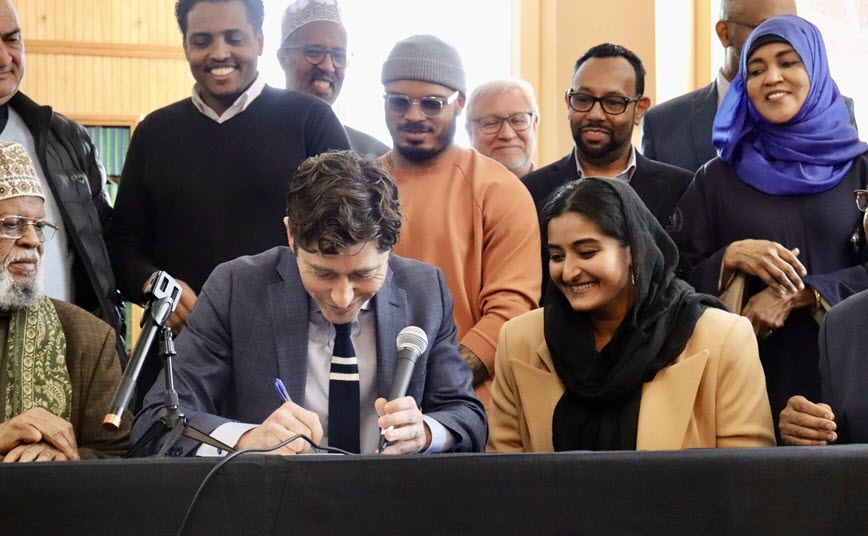Economic inclusion
Inclusive economic efforts
Ownership and Opportunity Fund
Mayor Frey helps local businesses own their businesses and the underlying real estate too. The City’s Ownership and Opportunity Fund provides loans to commercial real estate projects.
This fund:
- Helps economically challenged areas
- Supports equity
- Builds generational wealth in Minneapolis
Since 2020, the City has awarded more than $12 million to 25 local business owners. The mayor has made this fund a permanent part of the city’s budget.
Upper Harbor Redevelopment
The Upper Harbor Redevelopment is one of Mayor Frey’s most important redevelopment initiatives. The City is working to reconnect to Northside to the Mississippi Riverfront. It will create a public space for people of all ages to enjoy.
Upper Harbor Redevelopment is turning the old shipping terminal into a riverfront park.
It will include:
- New areas for work and living and a 20-acre park
- Improved bike and pedestrian lanes
- A community performing arts center
Nicollet Redevelopment
Mayor Frey and the City are working to reconnect Nicollet Ave. between the Midtown Greenway and West Lake Street. It is the site of the former K-Mart building.
The redevelopment will:
- Offer more affordable housing
- Create a community gathering space
- Improve the flow of traffic on one of Minneapolis’ busiest streets
- Add bike lanes and side walks
George Floyd Square
Mayor Frey is committed to making progress at George Floyd Square. The City is engaging with the community to know their vision for the space.
Community engagement efforts so far have:
- Totaled 17,000 staff hours
- Included 25,000 interactions with community members
The City is moving forward with developing the square to:
- Honor George Floyd
- Bring people together for healing, unity, and growth
- Support local businesses
- Provide space for community, art, and memorials
Downtown Action Plan
In October 2024, Mayor Frey announced the Downtown Action Plan. It is a roadmap to guide the future growth and development of downtown Minneapolis.
The plan imagines a:
- Nicollet Mall for pedestrians
- An entertainment-focused Warehouse District
- Improved efficiency for turning commercial buildings into housing
Businesses and community leaders helped to develop this plan.
Arts & Culture Vibrant Storefronts
Minneapolis is proud of its vibrant arts community.
The Arts & Culture Vibrant Storefronts:
- Helps artists and arts organizations
- Subsidizes rent for spaces in empty storefronts across downtown
- Beautifies the city while supporting local artists
Mayor Frey proposed tripling this funding in the 2025-2026 City budget. The goal is to expand it into Uptown.
Cannabis
The City has an inclusive and equitable approach to recreational cannabis in Minneapolis. Mayor Frey is working with local leaders to reach this goal.
As the City regulates cannabis and supports businesses in the industry, the focus is:
- Education
- Safety
- Fairness
Cultural districts
Mayor Frey and the City Council created "cultural districts" in Minneapolis.
These districts foster cultural or linguistic identity for:
- BIPOC communities
- Immigrant residents
They support BIPOC communities by:
- Helping prevent displacement
- Strengthening local businesses
- Providing tools and policies to meet BIPOC needs
In 2020, Mayor Frey signed an ordinance establishing cultural districts along:
- 38th Street South
- Cedar Avenue South
- Central Avenue
- East Lake Street
- Franklin Avenue East
- West Broadway
- Lowry Avenue North
These cultural districts are a part of Mayor Frey’s vision for an inclusive and fair city. A city where everyone has the opportunity to succeed.
Contact us
Office hours
8 a.m. – 4:30 p.m.
Monday – Friday
Address
City Hall350 S. Fifth St., Room 330
Minneapolis, MN 55415


